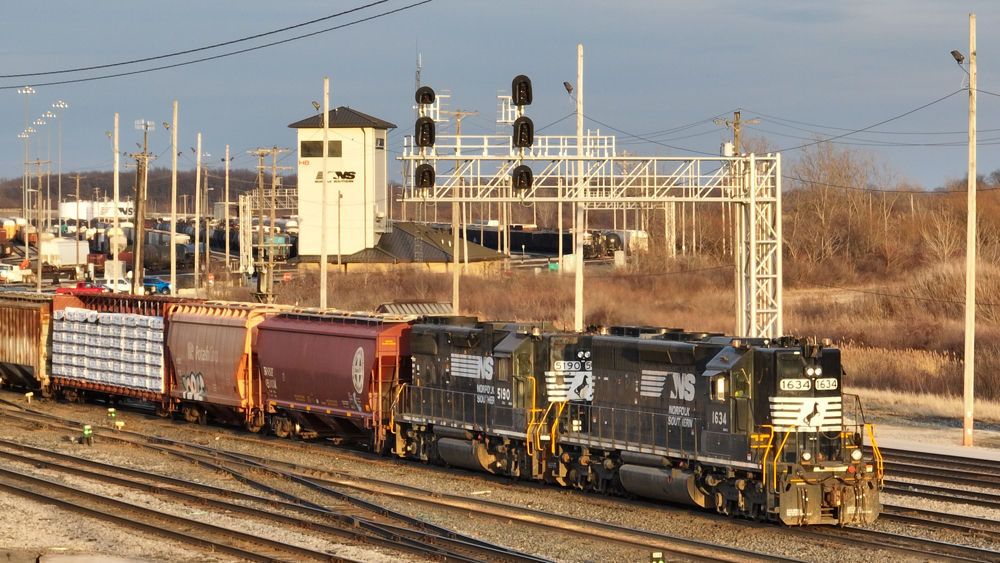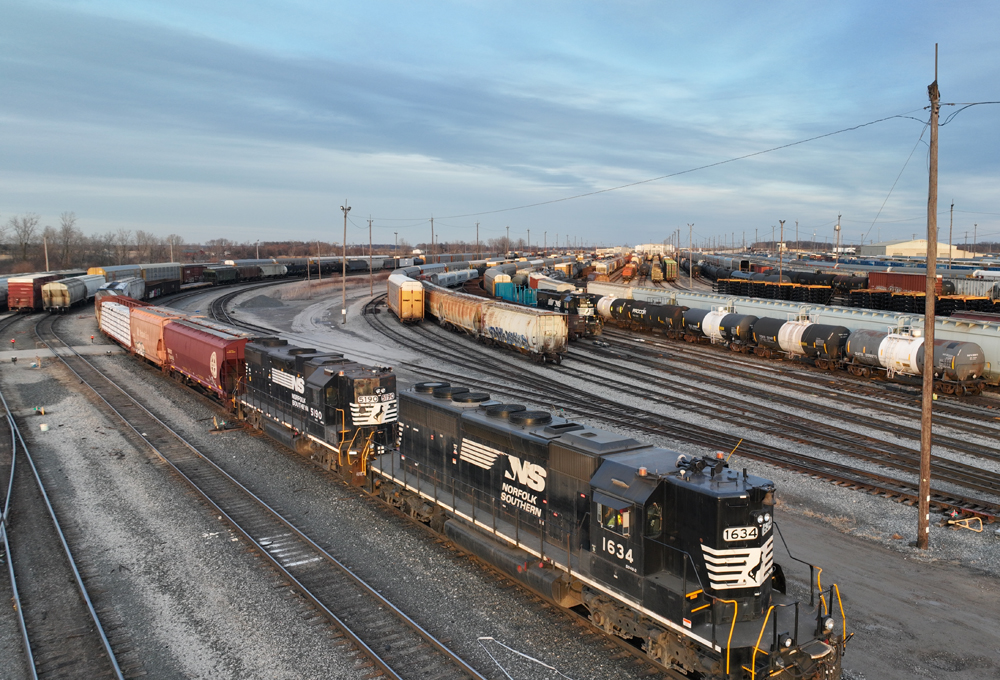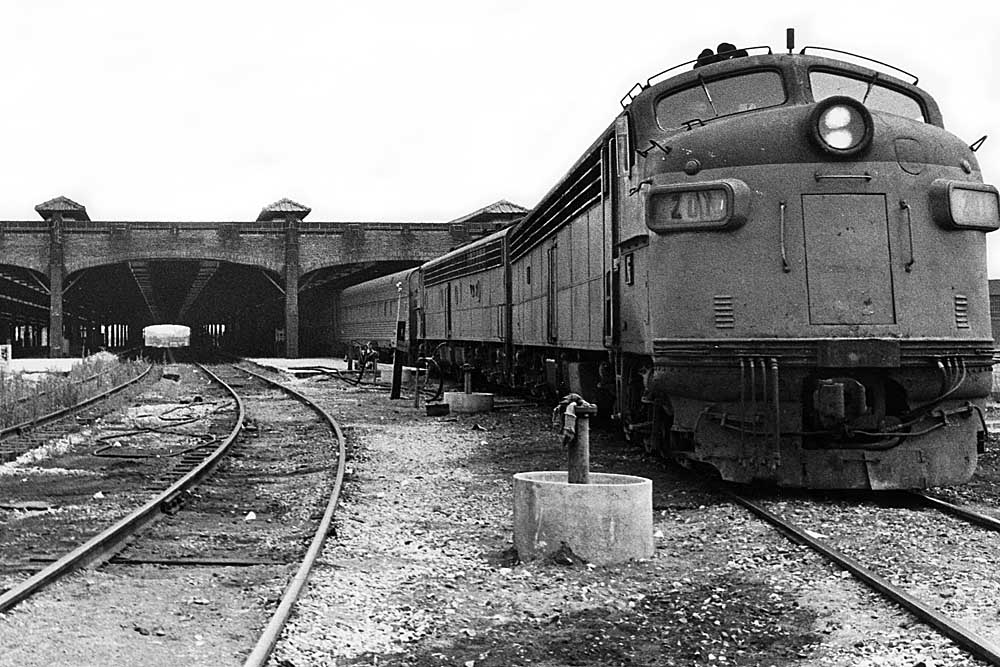Norfolk Southern high hoods

The high-hood locomotive once numbered in the hundreds on the Norfolk Southern roster, charged with every duty from high-value manifest trains to slow coal drags. Some even helped pull the curtain down on the last steam-powered branch lines.
Now, their numbers have been decimated down to the double digits, their duties pared back to yard work. What was once a common sight is now a rarity, confined to massive classification yards and small industrial jobs, barred from the high iron by a lack of positive train control equipment. Locomotives managing to escape back to the high iron have done so only with their distinctive high hoods chopped away by shops at Altoona, Bellevue, Roanoke, and others.
The high-hood design originated in the steam locomotives they replaced. The massive bulk of a steam engine’s boiler had shielded many a crew from injury in collisions and wrecks, and the typical short-hood-forward design of first-generation diesels must have appeared to be death traps to crews who previously sat 30 or more feet from any collision.
As a compromise, railroads ordered many first-generation diesels so that the long hood was the locomotive’s front end; the view from the cab was not dissimilar to that from a steam engine. The rear short hood was kept at the same roof height. Its space often housed steam heat equipment in the days of passenger trains, but later was used for amenities such as the crew toilet.
However, times quickly changed. The visibility benefits from a low short hood were demonstrated by railroads such as the Santa Fe and the Southern Pacific, and other railroads and manufacturers followed. By the 1970s, most locomotives were ordered with a low short hood, and even those with a high short hood ran short hood forward. The only railroads to buck this trend were the Norfolk & Western and the Southern Railway, which continued ordering high-short-hood locomotives, equipped for bidirectional running, until the two merged to form Norfolk Southern.
The newly formed NS finally dropped the practice, ordering new SD50s and GP59s with low short hoods, but still designating the long hood as the front. It wasn’t until 1989 that the short low hood was marked with an “F” on new NS locomotives
Still, the practice of running long hood forward continued. Many photographs exist of GE U23Bs and B30-7s running in that manner well into the 1990s, and many NS local jobs still do so today where the facilities to turn locomotives are scarce.
Two models remain

But even these jobs are performed with short-hood-equipped locomotives. Like the last members of a nearly extinct species, the high-hood diesel exists mostly in captivity, confined to yard jobs and switching duties. Now, 40 years after the NS merger, only two classes of such locomotives remain:
GP38-2 — The Southern Sentinels. Some of NS’ smallest power, the 257 GP38-2s built for the Southern between 1972 and 1979 make them the most numerous example of a high-hood diesel on any Class I railroad. While nearly half remain in active service, most have had their noses chopped, and are now oriented for short-hood-forward running. The 59 with high short hoods are incapable of leaving yard service or leading trains. They lack the PTC equipment their fleetmates received during the rebuilds that gave them low short hoods. The exception is NS No. 5214, nee Southern No. 5214, equipped with PTC and seen leading road trains as recently as June 2023.
SD40-2 — Once the workhorse, now the phantom stallion. Norfolk & Western, the Southern, and Conrail all operated the SD40-2 in large quantities. Some 50 years after the engines first hit the rails, Norfolk Southern still does, with over 200 units in active service. Additionally, an SD40-3 rebuild program is in progress, paving the way for the units to operate into the 2030s and beyond.
But only 10 of the locomotives on the company’s roster, all from the Norfolk & Western, still sport the high short hood. The 10, Nos. 1625-1635 (excluding 1633, rebuilt into a slug), are all from EMD order No. 73638, and are the last six-axle high hoods. At this writing, Nos. 1625 and 1626 are temporarily stored, while the remaining eight have been slowly dragged out of dead lines to fill holes in the NS yard fleet — some as recently as this year, when No. 1628 made a reappearance at Bellevue Yard after a long absence. Like the GP38-2s, none of the 10 SD40-2s are equipped with PTC and are confined to yard service and the occasional manifest train as a trailing unit, mostly in the Midwest. Currently, a pair of units are allocated to Bellevue Yard in Ohio, while single units have been seen in Detroit, Michigan, and Elkhart, Ind.














High hoods in the modern era were due to contract agreements having little or nothing to do crash protections. N&W and Southern both did them, for somewhat dissimilar reasons, and in somewhat dissimilar manners, but avoiding required turning of locomotives in signaled territory was one of the main reasons.
I caught HH SD40-2 1629 as the fourth unit in a consist pulling a freight west around Horseshoe Curve on 6/13/23. So they do get out on the main. I assume it was online since they were headed uphill!